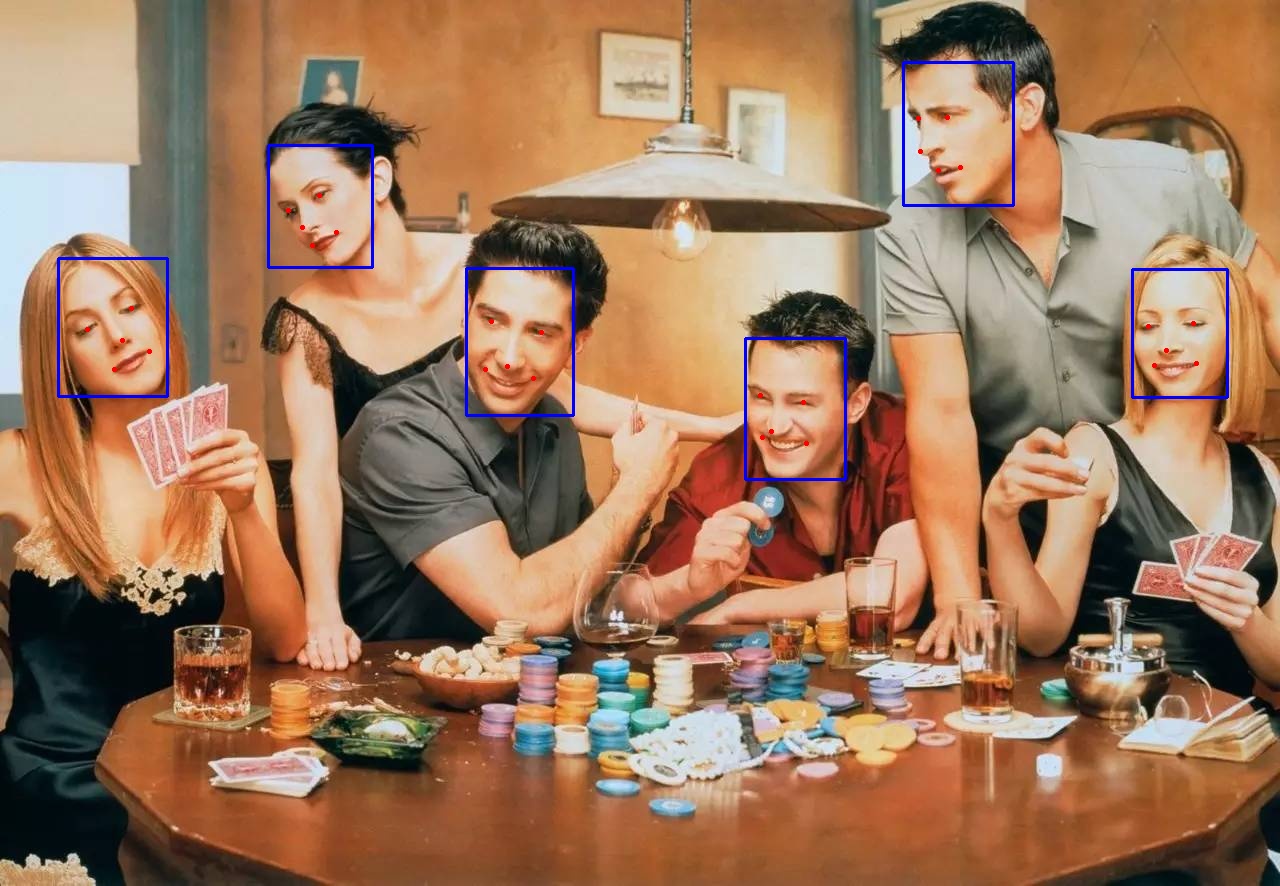主流的人脸检测技术几乎已经相当成熟了,刷脸系统就是一个常见的应用场景。 Insightface是一个开源的人脸分析项目。
如何人脸识别
代码仓库里面有一个scrfd.py文件,我们可以直接拿来使用,就可以识别人脸和确定关键点位。
下载人脸识别模型
在页面找到一个模型,比如buffalo_l模型,下载并解压出来。
下载一张人脸照片
可以使用代码仓库里面的照片。
测试代码
下载scrfd.py文件到本地,安装所需要的依赖,也可以参考下面的 Dockerfile。
FROM python:3.11.8-slim
RUN apt-get update && apt-get install -y tree libglib2.0-0 libgl1-mesa-dev build-essential libpq-dev python3.11-dev
RUN pip install click==8.1.7 itsdangerous==2.1.2 sqlalchemy psycopg2 \
Cython>=0.29.28 cmake>=3.22.3 numpy==1.24.2 oss2 \
onnxruntime opencv-python onnx scikit-image --no-cache-dir
导入需要的 package
import os
import cv2
import sys
import datetime
import onnxruntime
import numpy as np
sys.path.append(os.path.join(os.path.dirname(os.path.abspath(__file__)), '..'))
from scrfd import SCRFD
onnxruntime.set_default_logger_severity(3)
current_test_folder = os.path.dirname(os.path.abspath(__file__))
传入下载好的模型和照片
detector = SCRFD(model_file=os.path.join(current_test_folder, '../../models/det_10g.onnx'))
detector.prepare(-1)
img_path = os.path.join(current_test_folder, 'images/t1.jpg')
运行 detect 方法,该方法返回两个值bboxes kpss。
bboxes是检测到的人脸方框,每个方框分别有 5 个值,分别是左上坐标、右下坐标和检测概率值。
kpss是每个人脸的关键点位,分别是左眼、右眼、鼻子、嘴巴左侧和嘴巴右侧。
img = cv2.imread(img_path)
ta = datetime.datetime.now()
bboxes, kpss = detector.detect(img, thresh=0.5, input_size=(640, 640))
tb = datetime.datetime.now()
print('all cost:', (tb-ta).total_seconds()\*1000)
下面是 debug 输出的bboxes和kpss
# bboxes
array([[4.6608209e+02, 2.6861639e+02, 5.7358923e+02, 4.1553311e+02,
9.1965330e-01],
[7.4535284e+02, 3.3874139e+02, 8.4566339e+02, 4.7909033e+02,
9.1180491e-01],
[2.6849826e+02, 1.4560260e+02, 3.7232516e+02, 2.6700351e+02,
8.8568395e-01],
[1.1329001e+03, 2.6903189e+02, 1.2271696e+03, 3.9758008e+02,
8.8179767e-01],
[5.8770386e+01, 2.5865308e+02, 1.6752798e+02, 3.9619470e+02,
8.7853539e-01],
[9.0315533e+02, 6.2836594e+01, 1.0133536e+03, 2.0522063e+02,
8.7140775e-01]], dtype=float32)
# kpss
array([[[ 491.85046 , 321.8314 ],
[ 541.85266 , 332.11188 ],
[ 507.67114 , 366.41312 ],
[ 485.91965 , 369.691 ],
[ 533.74945 , 378.3811 ]],
[[ 760.51294 , 395.49942 ],
[ 803.72736 , 402.7126 ],
[ 771.53094 , 431.75635 ],
[ 762.99475 , 437.4276 ],
[ 806.5269 , 443.0071 ]],
[[ 288.15448 , 210.89319 ],
[ 319.64374 , 195.79184 ],
[ 302.58087 , 227.51608 ],
[ 312.39685 , 245.28354 ],
[ 336.88794 , 232.30792 ]],
[[1148.8239 , 326.0181 ],
[1193.2102 , 323.8155 ],
[1166.1467 , 350.2246 ],
[1154.2952 , 365.36026 ],
[1196.0679 , 363.4772 ]],
[[ 87.882385, 329.7735 ],
[ 131.18228 , 308.5124 ],
[ 122.2902 , 340.73746 ],
[ 114.00639 , 369.7087 ],
[ 149.48508 , 351.72122 ]],
[[ 918.5967 , 118.65146 ],
[ 947.50104 , 117.44199 ],
[ 920.71436 , 151.10785 ],
[ 938.9482 , 170.54126 ],
[ 960.82745 , 167.87477 ]]], dtype=float32)
描框和描点
对于上面找到的框和点,分别调用cv2.rectangle和cv2.circle进行描框和描点操作。
print(img_path, bboxes.shape)
if kpss is not None:
print(kpss.shape)
for i in range(bboxes.shape[0]):
bbox = bboxes[i]
x1, y1, x2, y2, score = bbox.astype(int)
cv2.rectangle(img, (x1, y1), (x2, y2), (255, 0, 0), 2)
if kpss is not None:
kps = kpss[i]
for kp in kps:
kp = kp.astype(int)
cv2.circle(img, tuple(kp), 1, (0, 0, 255), 2)
filename = img_path.split('/')[-1]
print('output:', filename)
cv2.imwrite('./%s' % filename, img)
最后导出结果如下,可以看到模型找到了 6 个脸,以及每个脸的关键点位。

眼睛打码
因为已经拿到了眼睛的坐标点位,剩下的就是将眼睛区域描黑即可。
eye1 = kps[0]
eye2 = kps[1]
roi = img[eye1[1]:eye2[1], eye1[0]:eye2[0]]
roi[:] = (0, 0, 0)
cv2.imwrite(output_file_path, img)